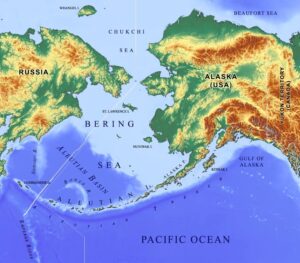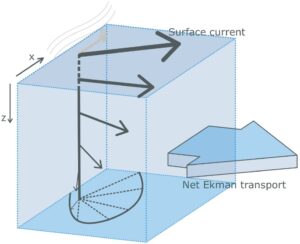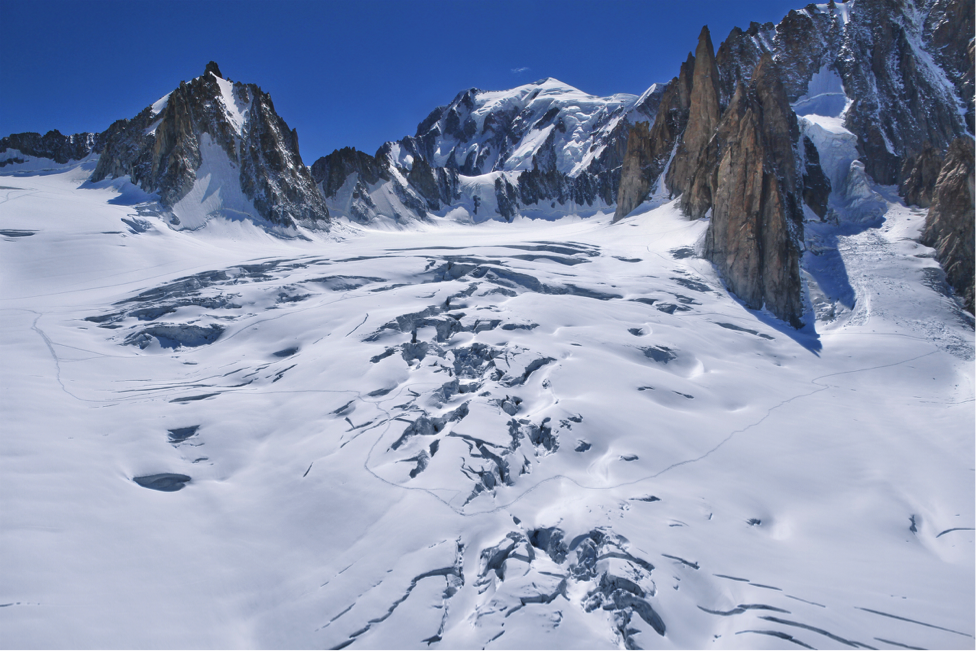Article: Hauri C, Pagès R, McDonnell AMP, Stuecker MF, Danielson SL, Hedstrom K, Irving B, Schultz C, Doney SC (2021) Modulation of ocean acidification by decadal climate variability in the Gulf of Alaska. Commun Earth Environ 2:1–7. https://doi.org/10.1038/s43247-021-00254-z

The Gulf of Alaska is a large body of water that is home to many commercial fisheries as well as subsistence fishing communities. Salmon, crab, mollusks, and other shellfish make up a significant part of these fisheries. These shellfish have been shown to be vulnerable to the effects of ocean acidification (OA), which is the absorption of anthropogenic carbon dioxide (CO2) from the atmosphere by the surface ocean. It is evident that OA is affecting the ocean globally by decreasing the surface pH (a measure for acidity), but the regional variations in ocean circulation and mixing, such as in the Gulf of Alaska, can change the rates of acidification. To better manage and conserve the fisheries species threatened by the effects of OA in Alaska, we must understand the seasonal dynamics of OA. A group of American researchers aimed to investigate the dynamics of OA using a regional ocean model. These models help researchers understand how multiple environmental factors may influence each other over time, and over a greater spatial region than individual observations by a boat can determine alone.
You spin me round

When wind blows over seawater it affects the relative flow of the water below it, so much so that it causes layers of the ocean to move each other and ‘spin’. This process, called the Ekman spiral, enables ocean water to circulate and move. One effect of this movement is that surface waters can be transported by the wind and allow deeper water to rise to the surface, essentially taking its place. Deep water is often high in dissolved inorganic carbon, a form of carbon related to OA, so when it is circulated to the surface ocean, it can increase the rate of OA. This process is particularly relevant in the Gulf of Alaska, where this circulation and transport results in a large ocean gyre that can become seasonally enriched in dissolved inorganic carbon at the surface.
The researchers found that large-scale winds in the atmosphere were influencing small-scale, local processes, and seasonally increasing the rate of OA within the Gulf of Alaska. Specifically, they observed that changes in the wind decreased the sea surface high of seawaters in the Gulf of Alaska around this ocean gyre. This depression occasionally enabled deep waters rich in dissolved inorganic carbon to rise to the surface and enhance OA rates.
Implications
This research shows how large-scale shifts in climate can affect local ecosystems and occasionally exacerbate regional OA on seasonal time-scales. In addition, by utilizing a model to better understand OA dynamics in the Gulf of Alaska, this resource can now be applied to detect the early crossing of biological and ecological thresholds. By identifying and predicting these thresholds sooner with models than we could otherwise with observations alone, scientists can better inform managers, stakeholders, and farmers of the different Alaskan fisheries when the effects of OA may be particularly severe.
I am a plankton ecologist focused on the effects of rapid climate change on phytoplankton and zooplankton populations and physiology. The major pillars of my research explore how global climate change (1) has and will impact long-term trends in plankton population dynamics and (2) has affected plankton physiology and feeding ecology.
As a Postdoctoral fellow of the Rhode Island Consortium for Coastal Ecology, Assessment, Innovation, and Modeling (RI-CAIM) I am analyzing the multi-decadal long-term plankton time series in Narragansett Bay. By identifying underlying environmental parameters driving plankton community dynamics my work will facilitate efforts to forecast important ecological phenomena in the region.

